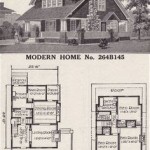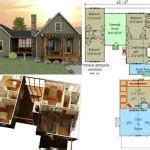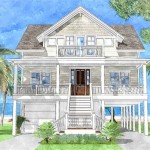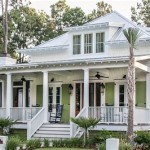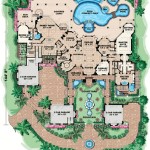Modular Home House Plans An Overview
Modular home house plans are a type of prefabricated construction method that involves building individual sections or modules of a house in a factory-controlled environment, which are then transported to the building site and assembled on the foundation.
These plans offer several advantages, such as faster construction time, lower costs compared to traditional site-built homes, and increased quality control as the modules are built in a controlled environment. Modular homes are also known for their durability and energy efficiency, making them an attractive option for those seeking sustainable and cost-effective housing solutions. Whether you’re a homeowner looking to build a new home or an investor searching for a viable rental property, modular home house plans provide a range of benefits that are worth considering.
9 Key Points about Modular Home House Plans
- Faster construction
- Lower costs
- Increased quality control
- Durability
- Energy efficiency
- Customization options
- Sustainable
- Variety of sizes and styles
- Suitable for various terrains
Modular home house plans offer numerous benefits, making them an attractive option for homeowners and investors alike.
Faster construction
One of the key advantages of modular home house plans is the significantly faster construction time compared to traditional site-built homes. This expedited construction process offers several benefits:
Predictable timelines: Modular homes are built in a controlled factory environment, allowing for precise planning and coordination of the construction process. This predictability reduces the risk of delays caused by weather conditions or other unforeseen circumstances, ensuring a more efficient and timely completion of the project.
Streamlined workflow: The modular construction process involves a streamlined workflow, with each module being built concurrently in the factory. This parallel construction approach eliminates the need for sequential tasks that are common in traditional site-built homes, resulting in faster overall completion times.
Reduced labor requirements: Modular construction requires fewer workers on-site, as the majority of the work is completed in the factory. This reduced labor demand not only lowers labor costs but also allows for more efficient use of skilled labor, leading to faster construction times.
Faster time to occupancy: The faster construction time of modular homes means that homeowners can move into their new homes sooner. This reduced time to occupancy can provide significant financial benefits, as homeowners can start enjoying their new homes and begin building equity more quickly.
Overall, the faster construction time offered by modular home house plans is a major advantage for homeowners and investors alike, providing predictable timelines, streamlined workflow, reduced labor requirements, and faster time to occupancy.
Lower Costs
Modular home house plans offer significant cost savings compared to traditional site-built homes due to several factors:
Material savings: Modular homes utilize materials more efficiently, reducing waste and overall material costs. The factory-controlled environment allows for precise cutting and assembly, minimizing material loss and optimizing material usage.
Economies of scale: Modular construction benefits from economies of scale, as materials are purchased in bulk for multiple homes. This bulk purchasing power allows manufacturers to negotiate lower prices with suppliers, resulting in cost savings that are passed on to homeowners.
Reduced labor costs: As mentioned earlier, modular construction requires fewer workers on-site, leading to reduced labor costs. The streamlined construction process and factory-based assembly minimize the need for specialized labor, resulting in lower overall labor expenses.
Simplified logistics: Modular homes are transported to the building site in completed sections, eliminating the need for on-site material storage and handling. This simplified logistics process reduces the risk of material damage, theft, or loss, contributing to overall cost savings.
Faster construction: The faster construction time of modular homes also contributes to cost savings. The reduced construction duration minimizes the need for extended project financing, reducing interest charges and other time-related expenses.
Overall, the lower costs associated with modular home house plans make them an attractive option for homeowners and investors seeking a more cost-effective housing solution without compromising on quality or durability.
Increased quality control
Modular home house plans offer increased quality control compared to traditional site-built homes due to several factors:
Controlled environment: Modular homes are built in a factory-controlled environment, providing optimal conditions for construction. The indoor setting eliminates exposure to weather elements, reducing the risk of moisture damage, warping, or other environmental factors that can compromise the quality of materials and workmanship.
Standardized processes: Modular construction follows standardized processes and quality control protocols, ensuring consistent quality throughout the manufacturing process. Each module is meticulously inspected before being transported to the building site, minimizing the risk of defects or errors.
Skilled workforce: Modular home manufacturers employ skilled workers who specialize in the factory-based construction process. These workers undergo rigorous training and are highly proficient in their respective roles, ensuring a high level of craftsmanship and attention to detail.
Rigorous inspections: Modular homes undergo rigorous inspections throughout the construction process, both during the fabrication of individual modules and the final assembly on-site. These inspections ensure that each module meets the required building codes and performance standards, guaranteeing the overall quality and durability of the home.
As a result of these factors, modular home house plans provide increased quality control, giving homeowners peace of mind knowing that their homes are built to exacting standards and are less likely to experience quality-related issues down the road.
Durability
Modular home house plans are known for their exceptional durability due to several factors:
High-quality materials: Modular homes are built using high-quality materials that are specifically selected for their durability and resistance to wear and tear. These materials include engineered wood, steel frames, and fiber cement siding, which are all known for their strength and longevity.
Precise construction: The factory-controlled environment of modular construction allows for precise assembly and meticulous attention to detail. The use of advanced construction techniques and specialized equipment ensures that each module is built to exacting standards, resulting in a durable and long-lasting structure.
Structural integrity: Modular homes are designed with structural integrity in mind. The steel frames and engineered wood components provide a robust framework that can withstand various environmental conditions, including high winds, earthquakes, and heavy snow loads.
Pest resistance: The materials used in modular homes are often treated to resist pests, such as termites and rodents. This treatment helps to protect the home from structural damage and ensures its long-term durability.
As a result of these factors, modular home house plans offer exceptional durability, providing homeowners with peace of mind knowing that their homes are built to withstand the test of time and provide a safe and secure living environment.
Furthermore, the durability of modular homes contributes to their low maintenance requirements. The high-quality materials and precise construction minimize the need for ongoing repairs and maintenance, reducing the overall cost of homeownership over time.
Energy efficiency
Modular home house plans are designed with energy efficiency as a top priority, offering several advantages that contribute to lower energy consumption and reduced utility costs:
- Optimized insulation: Modular homes are built with high levels of insulation in the walls, roof, and floors. This insulation helps to minimize heat loss during the winter and heat gain during the summer, reducing the demand on heating and cooling systems.
- Airtight construction: Modular homes are constructed to be airtight, minimizing air leakage and drafts. This airtight construction prevents warm or cool air from escaping the home, improving energy efficiency and reducing energy waste.
- Energy-efficient appliances and fixtures: Modular homes often come equipped with energy-efficient appliances and fixtures, such as LED lighting, ENERGY STAR-rated appliances, and low-flow plumbing fixtures. These energy-efficient features further reduce energy consumption and lower utility bills.
- Renewable energy options: Many modular home manufacturers offer the option to incorporate renewable energy sources, such as solar panels or geothermal heating and cooling systems. These renewable energy options can significantly reduce reliance on fossil fuels and provide long-term energy savings.
As a result of these energy-efficient features, modular home house plans can help homeowners save money on their utility bills while also reducing their environmental impact. The combination of optimized insulation, airtight construction, energy-efficient appliances and fixtures, and renewable energy options make modular homes a sustainable and cost-effective housing solution.
Customization options
Modular home house plans offer a wide range of customization options, allowing homeowners to tailor their homes to their specific needs, preferences, and style. These customization options include:
- Floor plans: Modular homes are available in a variety of floor plans, ranging from small and cozy to large and spacious. Homeowners can choose a floor plan that best suits their family size, lifestyle, and entertaining needs.
- Exterior finishes: Modular homes offer a variety of exterior finishes, including siding, roofing, windows, and doors. Homeowners can select finishes that complement their personal style and the surrounding environment.
- Interior finishes: Modular homes also allow for customization of interior finishes, such as flooring, cabinetry, countertops, and paint colors. Homeowners can choose finishes that create the desired ambiance and reflect their personal taste.
- Appliances and fixtures: Modular homes can be customized with a wide range of appliances and fixtures, including kitchen appliances, bathroom fixtures, and lighting. Homeowners can select appliances and fixtures that meet their specific needs and budget.
The customization options available with modular home house plans provide homeowners with the flexibility to create a home that is uniquely their own, while still benefiting from the advantages of modular construction, such as faster construction times, lower costs, and increased quality control.
Sustainable
Modular home house plans are recognized for their sustainability, offering several advantages that contribute to a reduced environmental impact and promote responsible resource management:
Energy efficiency: As mentioned earlier, modular homes are designed with energy efficiency as a top priority, incorporating features such as optimized insulation, airtight construction, energy-efficient appliances and fixtures, and renewable energy options. These features minimize energy consumption and reduce greenhouse gas emissions, contributing to a more sustainable living environment.
Reduced waste: The factory-controlled environment of modular construction allows for precise cutting and assembly, resulting in minimal material waste. Additionally, the use of sustainable materials, such as recycled steel and wood, further reduces the environmental impact of modular homes.
Durability and longevity: The durability and longevity of modular homes contribute to their sustainability. These homes are built to withstand various environmental conditions and require less maintenance over time, reducing the need for frequent repairs and replacements. The long lifespan of modular homes minimizes the environmental impact associated with the construction and disposal of new homes.
Site preservation: Modular construction minimizes disruption to the building site compared to traditional site-built homes. The modules are assembled off-site, reducing the need for extensive excavation and heavy machinery on the building site. This approach helps preserve natural landscapes and ecosystems, promoting sustainable land use practices.
Variety of sizes and styles
Modular home house plans offer a wide variety of sizes and styles to cater to the diverse needs and preferences of homeowners. From cozy cabins to spacious multi-story homes, modular construction can accommodate a range of sizes and configurations.
Small and cozy: Modular homes are available in smaller sizes, making them an ideal option for those seeking a compact and affordable living space. These homes typically range from 600 to 1,200 square feet and feature efficient layouts that maximize space utilization.
Medium-sized and family-friendly: Modular homes in the medium-size range offer more space and flexibility, making them suitable for families and those who need more room. These homes typically range from 1,200 to 2,000 square feet and often include multiple bedrooms, bathrooms, and living areas.
Large and luxurious: For those seeking spacious and luxurious living, modular homes can be designed to accommodate larger sizes, ranging from 2,000 square feet and above. These homes offer ample space for multiple bedrooms, bathrooms, expansive living areas, and even dedicated spaces for home offices or entertainment.
Suitable for various terrains
Modular home house plans are adaptable to a wide range of terrains, offering versatile construction solutions for diverse landscapes and challenging building sites:
Sloped terrains: Modular homes can be designed to accommodate sloping terrains, utilizing innovative engineering techniques to create level living spaces while preserving the natural contours of the land. This adaptability allows homeowners to build on challenging sites that may be unsuitable for traditional site-built homes.
Uneven or rocky ground: Modular construction can overcome the challenges of uneven or rocky ground conditions. The individual modules can be strategically placed and leveled to create a stable foundation, minimizing the need for extensive site preparation and excavation. This adaptability reduces construction costs and timelines, making modular homes a viable option for difficult terrains.
Flood-prone areas: Modular homes can be elevated on raised foundations to mitigate the risks associated with flood-prone areas. By elevating the living spaces above the potential flood level, homeowners can protect their homes from water damage and ensure the safety of their families.
Coastal regions: Modular homes are well-suited for coastal regions, as they can be designed to withstand high winds and salt corrosion. The durable materials and construction methods employed in modular homes provide resilience against the harsh coastal environment, ensuring longevity and peace of mind for homeowners.










Related Posts



